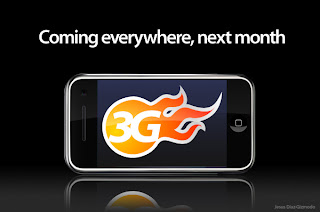3G Technology Well Accepted among Hypertensive Patients in Underserved Communities.
3G handsets and the Pill Phone (News - Alert) mobile medication reminder application are well accepted among patients participating in George Washington University and Wireless Reach Pill Phone Research Study.
The announcement was made by George Washington University Medical Center, One Economy, Cricket Communications, VOCEL, and Qualcomm’s (News  - Alert) Wireless Reach initiative at a mHealth seminar hosted by the George Washington Center for Global Health and the Department of Emergency Medicine.
- Alert) Wireless Reach initiative at a mHealth seminar hosted by the George Washington Center for Global Health and the Department of Emergency Medicine.
“3G wireless technologies offer new opportunities to communicate with patients and the potential to improve health outcomes,” said Dean Brenner, vice president of government affairs for Qualcomm, in a statement.
Thanks to the grant from Qualcomm's Wireless Reach initiative and contributions from One Economy, Cricket Communications (News - Alert) and VOCEL, the George Washington University Medical Center conducted and analyzed a seven-month study to measure the efficiency of the Pill Phone application to improve medication adherence among hypertensive patients.
The Pill Phone study was aimed at analyzing how wireless technology can engage patients, improve health outcomes and reduce health costs. Subjects included 50 Medicaid patients who were recruited from the internal medicine, renal/hypertension and cardiology clinics of The George Washington University Medical Center in Washington.
Hypertension affects more than 65 million adults in the United States and the main reason is poor adherence to blood pressure medications. African Americans are two to four times more likely to have kidney disease than their white counterparts due to uncontrolled hypertension. Hypertensive patients have other issues requiring additional medications and this forces them to take up to 10 pills a day.
“High blood pressure and diabetes are the leading causes of kidney disease, and Washington, D.C. has some of the highest rates of end-stage kidney disease in the nation,” said Richard Katz, director of the division of cardiology at The George Washington University Hospital. “The importance of the Pill Phone Research Study is that it offers a model for disease self-management that can be applied to at-risk communities.”
Each hypertensive patient received a 3G wireless handset pre-loaded with the Pill Phone application. The Pill Phone provides visual and audible medication dosage reminders, tracking and storage of dosage records, image displays of prescription pills and information about potential drug side effects.
VOCEL announced the Pill Phone application in 2008 for three major U.S. wireless operators. Pill Phone enables healthcare providers to remotely monitor patient adherence through a secure Web site, according to company officials.source



